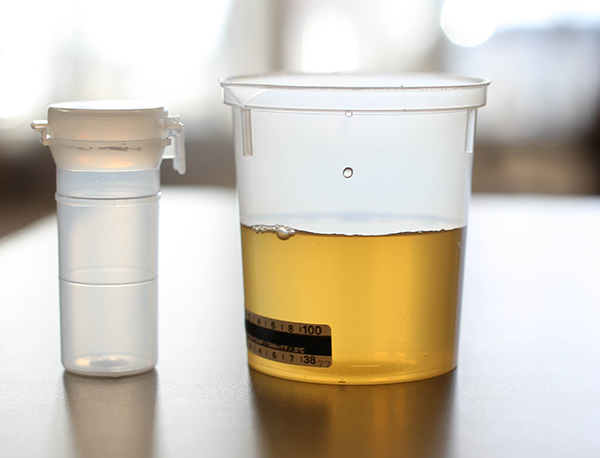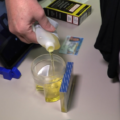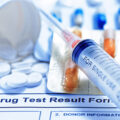A urine drug test is a common method used to detect the presence of drugs or their metabolites in a person’s urine. The test is often used to screen for drug use or to monitor patients who are taking prescription medications. The test typically involves collecting a urine sample from the individual and sending it to a laboratory for analysis. The lab will test the sample for a range of drugs, including marijuana, cocaine, amphetamines, opioids, and benzodiazepines, among others.
If the test comes back positive, it indicates that the person has used the drug(s) recently. However, it’s important to note that a positive result does not necessarily mean that the person is currently impaired or addicted to the drug(s). Additionally, false positives and false negatives can occur with urine drug tests, so the results should always be interpreted in the context of other information, such as the person’s medical history, drug use patterns, and other diagnostic tests.
Purpose of the urine drug test
There are several scenarios where a urine drug test might be necessary. For example, your primary care doctor may order this test if they suspect you have a problem with drugs or alcohol. An emergency room doctor may also request this test if you’re confused or your behavior seems strange or dangerous.
Many employers require potential employees to take a urine drug test before they can be hired. One benefit of the urine drug screen is that it can keep people with drug problems out of jobs that require the ability to be alert and focused. For instance, an air traffic controller or truck driver who uses drugs could put the safety of many people at risk. Testing may also lower the risk of on-the-job accidents.
How To Make Yourself Pee For A Drug Test
Many people have found out they can’t pee for drug tests, it is important to learn how to pee on command in order to avoid the unpleasant scenarios that such conditions generate. If you learn how to make yourself pee in 30 seconds, you can provide urine under any condition including drug testing.
Your body somehow understands when it is the right time to pee. While your bladder is getting full, the nerves communicate about it to your brain. Once this signal is communicated, your abdomen feels a mild pressure. This is the signal telling you that your body wants to eliminate extra water and salts.
However, in a few instances, you may find yourself forcing your body to pee. This may occur when you have undergone a surgery to treat a neurogenic condition of the bladder. A neurogenic condition interrupts the communication about your bladder being full. So, your body would find it difficult to figure out when to pee.
In a few other instances, you may have to force yourself to pee say, for a urine analysis, at the time of a lab test. You might have to pee inside a plastic vial or a container (sterilized) to collect your urine sample. There are also a few drugs that may discourage peeing, and make you retain urine.
In general, if you are forcing yourself to pee for a drug test, consider one of these 10 methods.
- Wash the perineum
It is the portion of your body between the anus and genitals. Be seated on your toilet and wash this area with warm water. Try to relax as much as possible while you wash your perineum. You can use a squirt-bottle filled with warm water for this purpose.
- Turn the faucet on
By this method, first sit on your toilet and relax. Now, run water from the faucet. As water flows through the sink, listen to the flow. Try not to think of anything else but stay focused on the sound created by the flow of water.
- Walk
It has been observed that a physical activity may trigger your bladder to urinate naturally. Walking is the easiest to do among all physical activities. So, go for a walk down your hallway or walk in circles in your room. Within a few minutes of walking, you may observe a mild stimulation of your bladder. This is an unmistakable signal that your bladder is stimulated to pee.
- Expose your hands to cold or warm water
For this method, you may need a bowl. Try to get a shallow bowl. Fill this bowl with warm or cold water. Now, keep the tips of your fingers inside the water. You might have to keep them inside water for some time. How long? It is done till your body activates your bladder for peeing. If you are not getting your bladder stimulated, you can attempt the same exercise inside your toilet.
- Leaning forward
Your bladder may get activated to pee when you bend yourself forward. So, sit on your toilet and relax your mind. When you feel a mild stimulation, bend forward and you may see that you are peeing without the need for additional force.
- Get a whiff of peppermint oil
Aroma of oils such as peppermint oil can make you to pee. For getting a whiff of this oil, take a cotton ball. Drop a few droplets of peppermint oil on the cotton ball. Now, sit on your toilet and relax your mind. Take the cotton ball closer to your nose and start sniffing.
- Tap your suprapubic area
The region between your penis (for men) or pubic bone (for women) and your navel is the suprapubic area. Try tapping this region. One tap every second for 30 seconds is sufficient. Such rapid tapping – in some people – has been found to stimulate the bladder to pee.
- Valsalva exercise
This is a method in which your forearm presses (very gently) your lower abdomen. This is done by sitting on your toilet and bear beneath or down as if you are about to have a movement of your bowel. While doing this technique, make sure that your forearm is not pressing your bladder directly.
- Stroke your thigh or the genital area
It has been observed that gently touching your thigh – especially the inner part of it – or your genital regions can make you pee. While touching it, stimulate the thigh with the tips of your fingers. Prior to doing this, relax your mind after sitting on your toilet.
- Adopt a few relaxation methods
This is equivalent to a medication of sorts. You need to put your mind in a relaxed mode for this. Once your mind has eased off, start to inhale and exhale with deep breaths. You will need to close your eyes while doing this deep breathing. While doing so, make it a point to relax all parts of your body. You may find that your brain activates your bladder for peeing without any external force.
How to make yourself pee fast after drinking water
Dieticians recommend intake of adequate quantities of water and consumption of citrus fruits such as lemons for peeing naturally. Other foods recommended include watermelons, herbs like parsley, carrots or cucumbers, etc can make you pee faster after drinking water.
Can Drug Screening Detect Fake or Synthetic Urine?
Yes, advances in technology have made it easier to detect fake or synthetic urine during drug screening. Synthetic urine is an artificially synthesized substance that simulates the composition, chemical properties, and appearance of human urine. In other words, it is “fake urine.”
Synthetic urine will only pass a drug test when laboratories do not perform genetic analyses on urine specimens. Most people who try to beat the system by using synthetic urine keep them warm to have the roughly estimated temperature of 98°F to convince the testing staff that the given specimen has been produced naturally and is authentic. Those required conditions are similar to those of human urine; therefore, a common urine analysis will not detect whether a urine sample is natural or synthetic. SEE: Can Visine In Urine Help You Pass a Drug Test?





